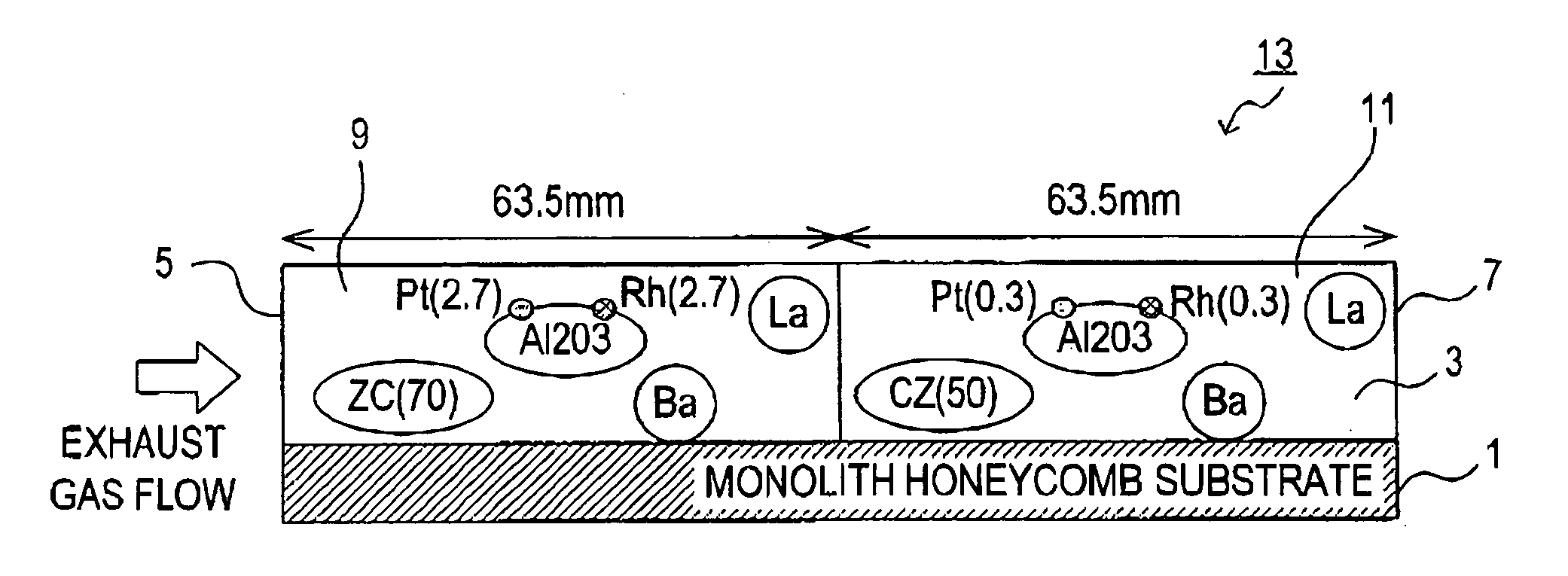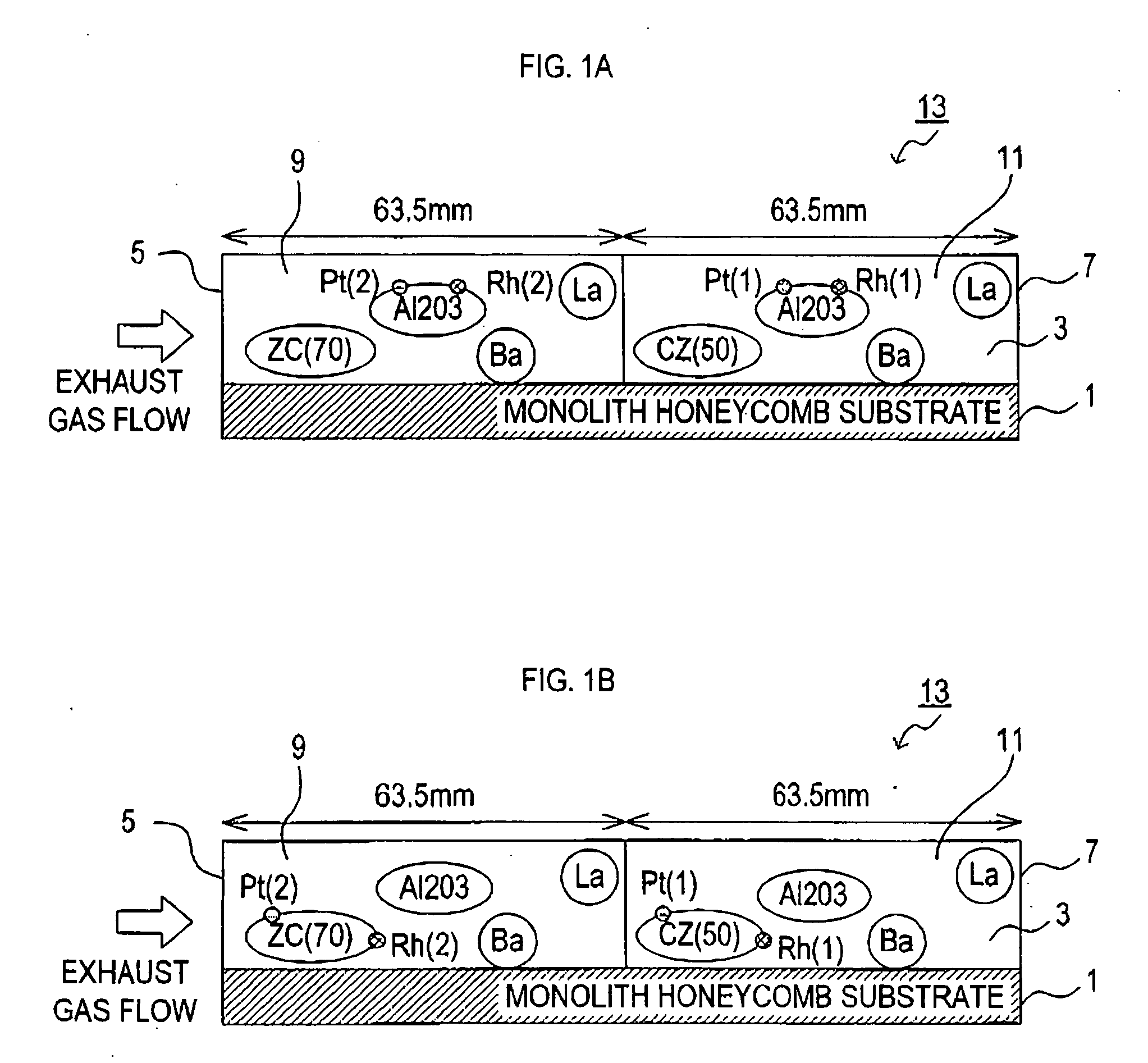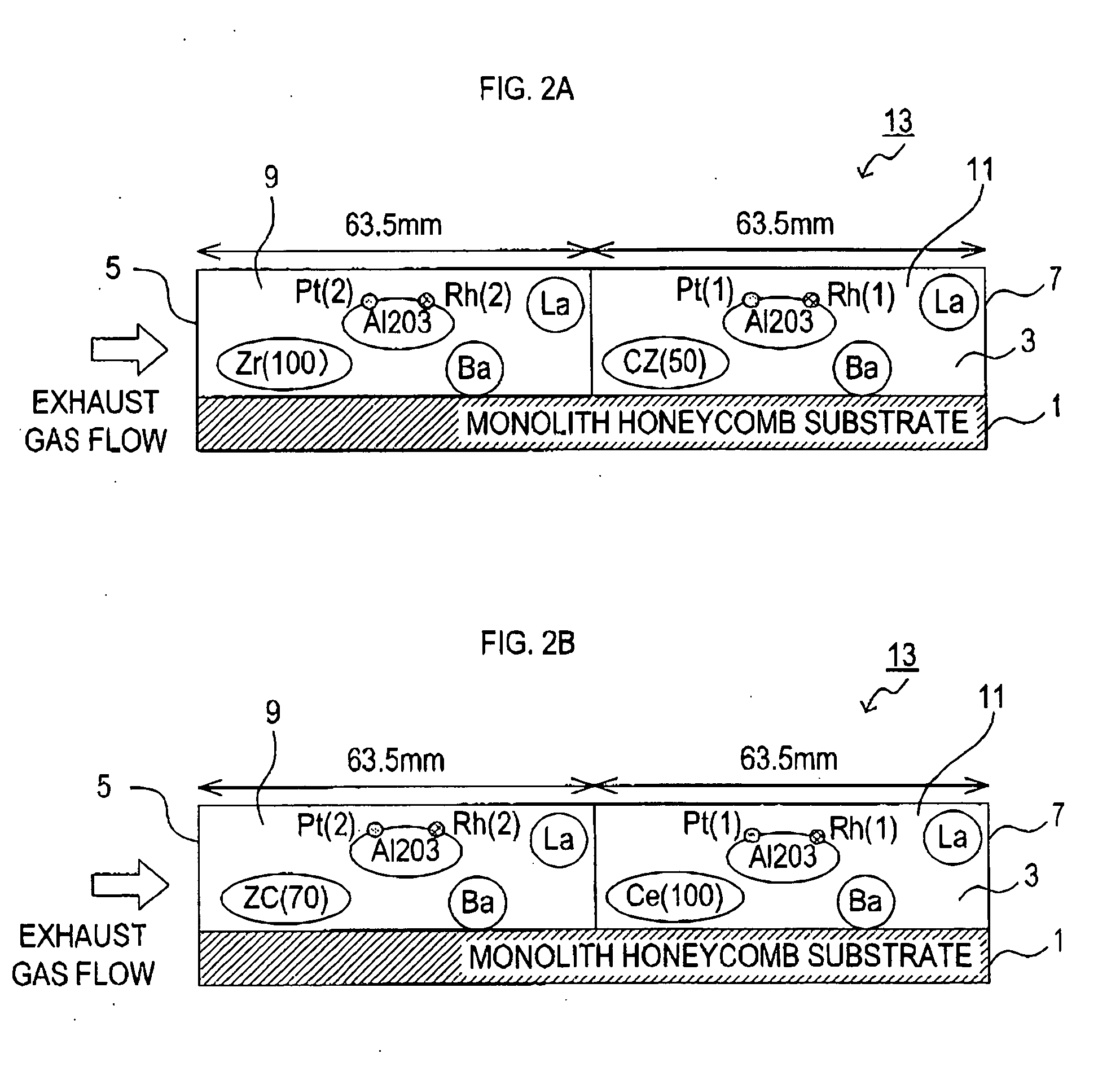Exhaust gas purifying catalyst
- Summary
- Abstract
- Description
- Claims
- Application Information
AI Technical Summary
Benefits of technology
Problems solved by technology
Method used
Image
Examples
embodiment 1
[0030] A honeycomb substrate made of cordurite is employed as a substrate 1. As shown in FIGS. 1A and 1B, the substrate 1, includes a through hole 3 extending in an axial direction and having a constant cross-sectional area. The entire length of the through hole 3 is 127 mm. In FIGS. 1A and 1B, a left end and a right end of the through hole 3 are an entrance end 5 and an exit end 7, respectively.
[0031] Exhaust gas enters the through hole 3 from the entrance end 5, passes through the through hole 3, and exits from the exit end 7. Accordingly, the though hole 3 shown in FIGS. 1A and 1B constitutes a passage of exhaust gas, in which the flow direction of exhaust gas is in a left to right direction. Although only one through hole 3 is indicated in FIGS. 1A and 1B, there actually are multiple through holes 3 formed in parallel with one another.
[0032] First, below listed components are mixed and dried to prepare a carrier powder H1.
[0033] (Carrier Powder H1) [0034] activated alumina: 4...
embodiment 2
[0061] Although an exhaust gas purifying catalyst 13 in Embodiment 2 is produced basically in the same manner as in Embodiment 1, there are some differences. Accordingly, a description will now be made mainly with respect to the differences.
[0062] In Embodiment 2, a carrier powder H3 as described below is prepared in place of the carrier powder H1.
[0063] (Carrier Powder H3) [0064] powder of a ZrCe mixed oxide (the oxide equivalent weight of Zr is 70 wt % of the oxide equivalent weight of Zr and Ce contained in the ZrCe mixed oxide): 50 g [0065] Pt nitrate solution: an amount containing 2 g of metal [0066] Rh nitrate solution: an amount containing 2 g of metal
[0067] A slurry S3 as described below is used in place of the slurry 1 in order to form the upstream side catalyst coating layer 9.
[0068] (Slurry S3) [0069] the carrier powder H2: 54 g [0070] activated alumina: 47 g [0071] Ba sulfate powder: 10 g [0072] La carbonate: 5 g [0073] alumina hydrate: equivalent to 3 g of Al2O3 [00...
embodiment 3
[0076] Although an exhaust gas purifying catalyst 13 in Embodiment 3 is produced basically in the same manner as in Embodiment 1, there are some differences. Accordingly, a description will be made below mainly with respect to the differences.
[0077] In Embodiment 3, a slurry S4 as described below is used in place of the slurry S1 in order to form the upstream side catalyst coating layer 9.
[0078] (Slurry S4) [0079] the carrier powder H1: 51 g [0080] powder of a Zr oxide: 50 g [0081] Ba sulfate powder: 10 g [0082] La carbonate: 5 g [0083] alumina hydrate: equivalent to 3 g of Al2O3 [0084] water: an appropriate amount
[0085] That is, the ZrCe mixed oxide contained in the slurry S1 in Embodiment 1 is replaced by the Zr oxide in Embodiment 3. As a result, not the ZrCe mixed oxide but the Zr oxide is included in the upstream side catalyst coating layer 9, as shown in FIG. 2A.
PUM
| Property | Measurement | Unit |
|---|---|---|
| Fraction | aaaaa | aaaaa |
| Fraction | aaaaa | aaaaa |
| Fraction | aaaaa | aaaaa |
Abstract
Description
Claims
Application Information
 Login to View More
Login to View More - R&D
- Intellectual Property
- Life Sciences
- Materials
- Tech Scout
- Unparalleled Data Quality
- Higher Quality Content
- 60% Fewer Hallucinations
Browse by: Latest US Patents, China's latest patents, Technical Efficacy Thesaurus, Application Domain, Technology Topic, Popular Technical Reports.
© 2025 PatSnap. All rights reserved.Legal|Privacy policy|Modern Slavery Act Transparency Statement|Sitemap|About US| Contact US: help@patsnap.com



